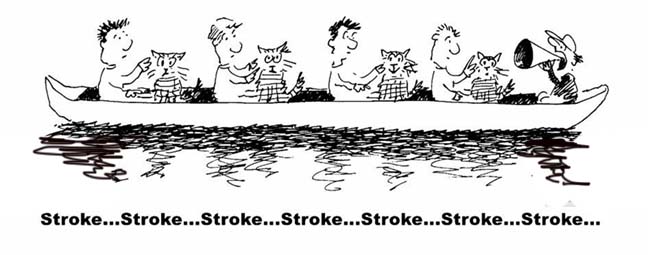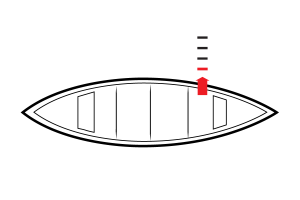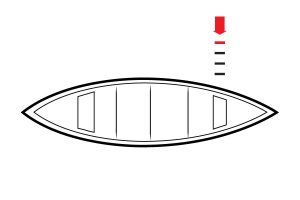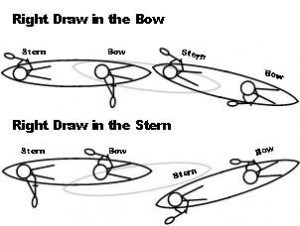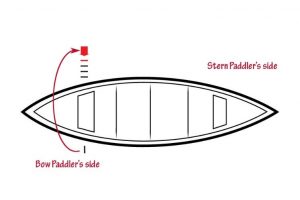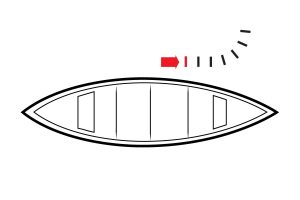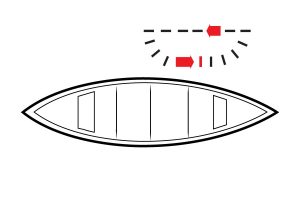Forward Stroke (Power Stroke)
The “forward stroke” is, quite simply, the stroke that moves your canoe forward and is used mainly by the bow person in tandem or doubles canoeing.
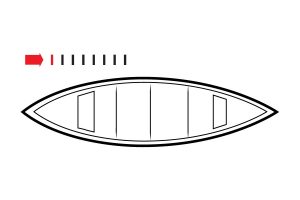
Though the forward stroke may appear to be simple, there are lots of ways to do it wrong. The goal is not to simply to move your canoe forward, but to move it forward with the greatest power and efficiency possible so you don’t waste energy and possibly hurt yourself.
To start this stroke (the wind-up), the grip hand, (the hand at the top of your paddle shaft), should be at about chin level and away from your face. Lean slightly forward with both the shaft and grip hands and rotate your torso forward as you place the paddle in the water.
Keeping your arms slightly bent, draw the paddle straight back through the water with the face of the blade perpendicular to the water, twisting your torso through the stroke (catch and power phase). This is done by applying forward pressure (like a punch) with your grip hand and using your shaft hand as the pivot point (fulcrum), so the paddle is used like a lever. The shaft hand should be loose for easier rotation of the shaft. The power of the stroke comes from your torso and hips, not from your arms.
To complete the stroke (recovery phase), slice your paddle out of the water up by dropping the grip hand and rotating the wrist so the grip hand thumb is pointing forward and then “feathering” around to your starting position just skimming the water. (“Feathering” simply means swinging the blade forward, flat above the water’s surface so it cuts through the wind instead of catching it.)
Back Stroke (Reverse Stroke)
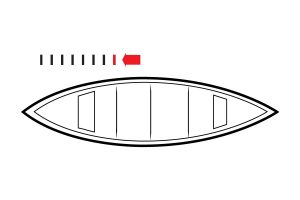
This stroke is the reverse of the forward stroke where you rotate your torso toward the stern and place the paddle in the water to the rear of your body. You then push forward with the shaft hand and pull with the grip hand. Unwind the torso until the shoulders are square with the gunwales with the shaft hand fully extended. Complete the stroke by lifting the blade out of the water and arcing the shaft hand backward over the water and dropping the grip hand to chest level.
This stroke can be used to stop the canoe or to back up for hazard avoidance, to ferry across the current, or hold position in a current.
Hopefully this post will help you understand these basic strokes much better. Once you see these strokes in action and actually get to practice them, you will get a better understanding of how they work!
In case you missed them, here are other posts that might be of interest to you:
Path of the Paddle: Doubles Basics
Parts of a Canoe & Paddle
Just a reminder that you have a chance to practice these and other strokes at the “Victoria Pond” practice session and other canoe outings.
Credits:
Forward Stroke – CanoeingBasics.com
Paddle Canada, Canoe Strokes Resource Document, 2012
Different Strokes for Canoeing Folks – Karen Berger
Five Essential Canoe Paddle Strokes – Karen Ingraham
Photo: By MooseHead88 – Own work, CC BY-SA 3.0,
